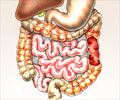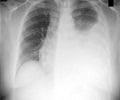South African scientists announced a major breakthrough on Thursday in the fight against a highly deadly strain of drug resistant tuberculosis, sequencing the genome in a week.
Using technology bought from the United States for five million rand (750,000 dollars, 520,000 euros) a group of scientists working for a government-sponsored research centre decoded and sequenced the strain."We have taken a sample of (XDR) TB from a Kwazulu-Natal patient and sequenced the entire genome of the strain of TB," said Carl Montague, the health portfolio manager of Lifelab which funds the National Genomics Platform.
"(It) took us just over a week, using other technology it would have taken up to a year," he told AFP.
It is hoped the breakthrough will lead better diagnosis of the strain and understanding of the mechanisms involved in its resistance to drugs.
"A bacterium is a fairly simple organism. By looking at mutations between the drug resistant form and drug sensitive form we are able to see differences and from that be able to look at biological mechanisms, (such as) which genes mutated and how can we use the knowledge to develop better diagnostics," Montague said.
Extreme Drug Resitant TB (XDR) was first discovered last year in Kwazulu-Natal, one of the areas worst hit by AIDS in South Africa.
Advertisement
In one situation, all but one of a group of 53 people with the strain died within 25 days of diagnosis.
Advertisement
He said the technology imported from the US was able to generate 100 million base pairs of DNA sequence per experiment, meaning massive amounts of information are generated in a very short period of time.
The strain of TB was fully sequenced more than 20 times, so that mutations could be distinguished from sequencing errors. The sequence is now busy being analysed and scientists hope to use it to develop a rapid test to diagnose TB.
Using this technology "we can design drugs that are more effective and better drugs that have already been developed and approved," said Sakwa.
Finding an effective drug could take up to ten years, but the technology could prove useful in probing other drug resistant diseases such as HIV.
"We are going to use it for HIV drug resistance, and we already have a project in line with that," said Okole.
With antiretrovirals the only line of defence against the AIDS pandemic, drug resistance provides a major challenges as no ARV is resistance proof.
"As we scale up to reach millions of persons in developing countries, where 95 percent of all people with HIV live, identifying HIV resistance to ARV drugs and its causes early will be critical to policy makers and programme managers," says the World Health Organisation.
Source-AFP
LIN/C











